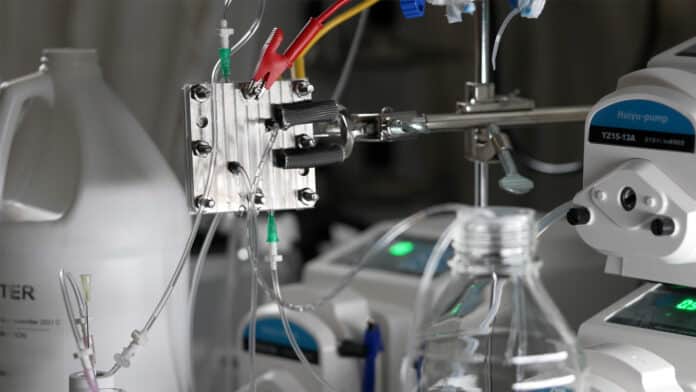Carbon dioxide (CO2) is a key greenhouse gas that causes global warming, leading to a detrimental global impact on the environment, economy, and society. Carbon capture technologies can play an essential role in managing and reducing CO2 emissions and help mitigate the effect of fossil fuels on global warming and ocean acidification.
Current technologies, such as electrochemical carbon capture with renewable electricity as the energy input, are promising for carbon management but still suffer from low capture rates, oxygen sensitivity, system complexity, and high costs.
Rice University engineers have now developed a new technology that could lower the cost of capturing carbon dioxide from all types of emissions. The technology could be a potential game-changer for both industries looking to adapt to evolving greenhouse gas standards and for the emergent energy-transition economy.
The technology developed by the Rice team is a reactor that can directly remove carbon dioxide from sources ranging from flue gas to the atmosphere by using electricity to induce a water-and-oxygen-based electrochemical reaction.
The rector is made up of a cathode set up to perform oxygen reduction, an oxygen evolution reaction-performing anode, and a compact yet porous solid-electrolyte layer that allows efficient ion conduction.
The previous version of the reactor was used to reduce carbon dioxide into pure liquid fuels and reduce oxygen into pure hydrogen peroxide solutions. During the research process, the team observed that gas bubbles flowed out of the reactor’s middle chamber along with the liquids.
Although initially thought to be an insignificant phenomenon, further investigation revealed a direct correlation between the applied current and the number of bubbles produced. This correlation indicated a non-random process and provided more information about the behavior of the reactor.
The scientists found that the alkaline interface formed during the reduction reaction on the cathode side of the reactor interacts with carbon dioxide molecules to form carbonate ions. Carbonate ions migrate to the electrolyte layer of the reactor, where they combine with protons produced by water oxidation at the anode, forming a continuous flow of high-purity carbon dioxide.
The reactor can continuously remove carbon dioxide from a simulated flue gas with an efficiency above 98% using a relatively low electricity input. “The electricity used to power a 50-watt lightbulb for an hour will yield 10 to 25 liters of high-purity carbon dioxide,” said Peng Zhu, a chemical and biomolecular engineering graduate student and lead author of the study.
The researchers say their process has “no carbon footprint or a very limited footprint” if powered by electricity from renewable sources such as solar or wind.
Current carbon-capture technologies rely on large-scale, centralized infrastructure. By contrast, the new system is a scalable, modular, point-of-use concept that can be adapted to a variety of scenarios.
“The technology can be scaled up to industrial settings – power plants, chemical plants – but the great thing about it is that it allows for small-scale use as well: I can even use it in my office,” said biomolecular engineer Haotian Wang.
Journal reference:
- Peng Zhu, Zhen-Yu Wu, Ahmad Elgazzar, Changxin Dong, Tae-Ung Wi, Feng-Yang Chen, Yang Xia, Yuge Feng, Mohsen Shakouri, Jung Yoon (Timothy) Kim, Zhiwei Fang, T. Alan Hatton, and Haotian Wang.Continuous carbon capture in an electrochemical solid-electrolyte reactor. Nature, 2023; DOI: 10.1038/s41586-023-06060-1
